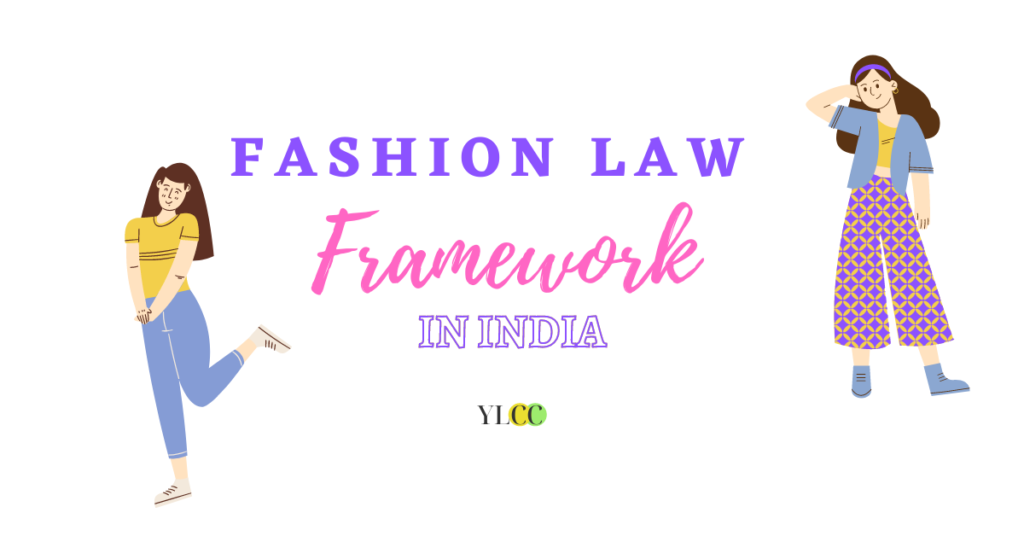
Introduction: What constitutes the fashion industry?
“Fashion is the essence of our personality. It reflects who we are.” In today’s world, fashion has become an indispensable part of human life. For most, fashion may primarily refer to clothes, garments, or accessories but in reality, if we delve into the fashion industry, it constitutes several other aspects . The fashion industry embodies various heterogeneous yet interdependent sectors that have played a vital role in its raging success. A garment that we see in a showroom/store or a market is displayed after a globetrotting.
The process begins with the production of raw materials; the idea of design in the mind of the designer, and creating that design on paper formulates the next step. Then comes the selection of fabric and colours; subsequently the collection of raw materials and other manufacturing-related work take place and thereafter paper design is transformed to actual apparel displayed on the mannequin. This journey ends when the apparel lands in the showrooms/boutiques/stores and finally goes in the hands of the consumers.
This peregrination of a garment is unaccomplished without substantial contributions from other sectors. It can therefore be said that the garment, the beauty of which attracts us at first glance, is the upshot of the synergy of numerous sectors.
Precisely, there are four pivotal niche sectors of the fashion industry: –
- Textile Design and Production: This sector deals with the production of fabrics, dyeing, weaving, printing, and other manufacturing processes anticipating the demands and the requirements of the consumers.
- Fashion Design and Manufacturing: This industry focuses on fashion designers making clothes designs that are in line with current trends. The general approach of the designers includes sketching on paper, draping fabrics on mannequins, and nowadays they are equipped with computer-assisted techniques as well. Besides this, the apparel is manufactured in different sizes with perfect finishing in embroidery, linings, borders, etc.
- Fashion Retailing and Merchandising: This sector is responsible for getting the clothes from the manufacturer to the consumer.
- Media and Marketing: This sector has given rise to fashion journalism and modelling. Fashion magazines, as well as fashion shows and influencer collaborations, are becoming the most commonly sought after marketing tools for fashion houses.
How are the Fashion Industry and Law intertwined?
India, being one of the largest producers of cotton, jute, and silk across the world, is gradually making its presence felt in the global fashion industry. Moreover, the fashion sector has a significant contribution to the Indian economy as well in terms of generating employment. However, there is a saying that with success comes challenges and the fashion industry is no exception. With the popularity of the Fashion industry in recent times, one pertinent domain that has come to the limelight is Fashion Law (also known as Apparel Law) which is still evolving and is yet to possess a concrete framework. There is no exclusive statute in India on the subject; rather multiple legislations together govern different facets of the industry.
Principally, fashion law encompasses relationships amongst fashion designers, manufacturers, distributors, and consumers; protection and ownership of designs created or used by fashion houses; establishing a fashion brand company; rights of the models, photographers, consumers, etc., import and export of apparels; promotion of sustainable fashion, competition in the market.
Applicable Fashion Law in India: Essential Legislations
The fashion industry consistently creates wide collections of new designs that must be safeguarded and regulated by a competent authorities. Since fashion law is diverse in its scope, one must have a clear idea of what all statutes and laws entail in the sphere of fashion law. The following are some vitally important legislations with their interplay in this area: –
Intellectual Property Right Laws: Under the Intellectual Property regime, protection is provided to artistic works, logos, designs, etc. of the creator and includes trademark, copyright, patent, and design. In IP laws lies the heart of the fashion law as it guarantees protection to the creator/designer/maker against the use of his intellectual work.
Trademark: You must have heard someone saying “I have bought a branded shirt or shoes or handbag.” How do you determine whether it is branded or not? The simple answer is by its logo or mark. Generally, a logo/label/mark is printed over every piece of garment which helps us to distinguish between the branded/original item and copied one. This is known as a trademark and is protected under the Trademarks Act, 1999. This legislation deals with the registration, protection, and prevention of malicious use of trademarks. Trademarks protection is a top priority for any fashion brand which has a reputation and goodwill of its own.
Copyright: This branch of IPR protects original artistic design works which include drawings, paintings, sculptures, and other craftsmanship work. Fashion is undeniably an art form, and a designer’s design serves as the basis for the final garment. Perhaps there is a likelihood that the design may be stolen or illegally used by someone else. The Copyright Act, 1957, comes to the rescue of the designer/creator by protecting his design for 10 years from the date of registration. Sadly, there is a major drawback under Section 15(2) of this Act which states that if a design/creation is eligible to be registered under the Design Act, 2000, but has not been registered there and has been reproduced more than fifty times, the copyright in that product will come to an end per se.
Design: It involves the colour, shape, and pattern of the product. The Design Act, 2000, incorporates provisions for the protection of design, shape, colour, or pattern only if the design is registered under this act. This legislation precisely aims to protect the work from the menace of piracy.

Patent: A patent grants protection to novel inventions that are capable of industrial application. Sticking to the fashion industry, if a new technology has been invented which enables a designer to make computer-assisted designs or focuses on the manufacturing of fibres or shoes, such an invention can be patented in India under the Patents Act, 1970
Geographical Indications: India has a rich and varied culture and traditional art done by local artisans in respect of textile goods and other articles is an intrinsic part of it. The Geographical Indication Act, 1999, protects various indigenous artwork like Kanchipuram silk from Tamil Nadu and Baluchari saree from West Bengal.
- Corporate and Banking Law: For better recognition in the market, fashion brands set up companies that are registered as per the provisions of the Companies Act, 2013. This is how corporate law comes into the picture. Banking law and taxation law deals with loans and other financial transactions associated with a company
- Contract Law: Contract drafting and negotiations are an intrinsic part of the fashion industry. Be it between manufacturer and retailer or designer and manufacturer or employer and employee, the Indian Contract law is invaluable when it comes to this field.
- Labour Laws: Since there exists a company/industry, labour laws such as the Industrial Disputes Act, 1947, Factories Act, 1948, Payment of Wages Act, 1936, etc. are necessary to regulate the employer-employee relationships and the manufacturing process. Also, in the case of factories, labour laws keep a check on the basic standards to be followed in the factories; health and safety measures for workers, protection from exploitation; a ban on child labour, etc.
- Consumer Law: Consumers are the cornerstones of every industry or business. The trust of the consumers is the biggest profit for the fashion houses. Since consumers are the ultimate buyers of the garments, it is important to protect the rights of the consumers and thus, the Consumer Protection Act, 2019 comes into play against several wrongs such as misleading advertisements and unfair trade practices.
- Technology Law: Since the advent of the internet, technology acts as a marketing and advertising tool. Also, due to the COVID-19 pandemic, traditional buyers have also shifted to e-commerce and prefer shopping from such platforms. So, fashion brands have created their websites, online platforms, and social media handles which are governed by the Information Technology Act, 2000.
- International Trade Law and Customs Law: These laws govern the import and export of the products.
- Environmental Laws: An emerging area called sustainable fashion or eco-fashion is prevailing nowadays. Intending to curb the environmental issues, fashion houses are using eco-friendly raw materials in the garments which is an attraction for the consumers as well.
In addition to this, there are several autonomous bodies such as the Fashion Design Council of India (FDCI), the Fashion Foundation of India (FFI), and Apparel Export Promotion Council (AEPC) that are working for the welfare of the fashion industry and aim at the smooth implementation of fashion laws.

In conclusion, it can be reiterated that fashion and law both are dynamic and ever-evolving domains. Fashion takes its cues from current trends; hence fashion legislation must be updated to keep up with the latest trends. Fashion law in India is an amalgamation of a plethora of other branches of law and yet an unexplored domain. The existing fashion law framework has numerous lacunae which require the immediate attention of the legislature for further amendments. The fashion designers/creators need to be more aware of their rights and safeguards especially guaranteed by the IP regime. With the booming success of the fashion market, there is a parallel ascend in the duplicate fashion market which is comprises counterfeits and knockoffs and these problems remain unaddressed through the existing laws.
YLCC would like to thank Neha Gurunani for her valuable inputs in this article.







